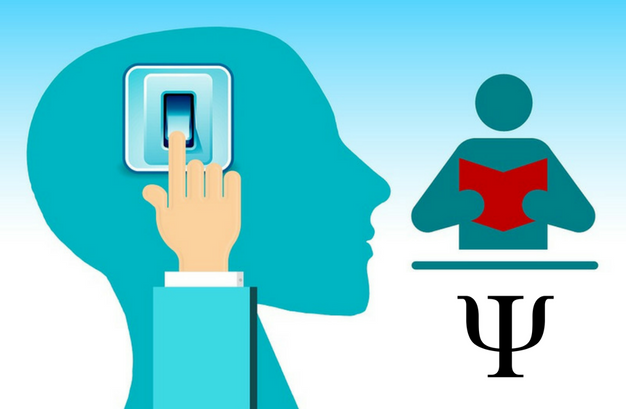Psychology Classics On Amazon

Empathetic AI: Bridging the Gap
Between Emotion and Technology
Introduction to Empathetic AI
In an era where technology permeates every facet of our lives, the quest to make machines more human-like has taken center stage. Empathetic AI represents a revolutionary stride in this direction, aiming to imbue artificial intelligence with the ability to recognize, understand, and respond to human emotions. Imagine interacting with a customer service chatbot that not only resolves your issue efficiently but also senses your frustration and responds with genuine concern. This is the promise of empathetic AI—a fusion of advanced technology and deep psychological insight that could transform our interactions with machines.
But why is empathy in AI such a groundbreaking development? At its core, empathy is the glue that holds human relationships together, fostering understanding and connection. Transferring this capability to AI systems could enhance user experiences, improve outcomes in various industries, and even address societal challenges like loneliness and mental health support. As we stand on the cusp of this exciting frontier, it's crucial to explore what empathetic AI entails, how it works, and the implications it holds for our future.
In this comprehensive article, we delve deep into the world of empathetic AI, exploring its psychological underpinnings, technological frameworks, real-world applications, and the ethical considerations that accompany its development. By understanding the nuances of empathetic AI, we can better appreciate its potential impact and navigate the challenges it presents.
The Psychology of Empathy
To comprehend empathetic AI, we must first delve into the psychology of empathy itself. Empathy is the ability to perceive and resonate with the emotions of others, a fundamental human trait that facilitates social bonding and cooperation. Psychologists distinguish between two main types of empathy: cognitive empathy and affective empathy.
- Cognitive Empathy: This is the intellectual understanding of another person's emotional state. It involves perspective-taking and recognizing what someone else might be feeling or thinking.
- Affective Empathy: This refers to the capacity to emotionally respond to another's feelings. It involves sharing or mirroring emotions, leading to genuine concern for the well-being of others.
Empathy's Role in Human Interaction
Empathy plays a pivotal role in our daily interactions, enabling us to navigate complex social environments, resolve conflicts, and build meaningful relationships. It fosters trust and collaboration, essential components in personal relationships, workplaces, and communities. In professions such as healthcare, education, and counseling, empathy enhances the effectiveness of services provided.
Challenges in Modeling Human Empathy
Replicating human empathy in machines is challenging due to its deeply personal and subjective nature. Empathy involves not just recognizing emotions but also responding appropriately based on context, cultural norms, and individual differences. These complexities present significant hurdles in programming AI systems to behave empathetically.
How AI Develops Empathy
Translating human empathy into artificial intelligence involves a multifaceted technological framework. Empathetic AI relies on advanced technologies like machine learning, natural language processing (NLP), computer vision, and affective computing to recognize and respond to human emotions.
Technological Framework
- Machine Learning: Algorithms learn from vast datasets to identify patterns associated with different emotional states. Supervised learning models are trained on labeled data where emotions are tagged, enabling the AI to recognize similar patterns in new data.
- Natural Language Processing (NLP): Enables AI to comprehend and generate human language, capturing nuances like tone, context, and sentiment. Sentiment analysis is a key component, allowing the AI to detect positive, negative, or neutral emotions in text.
- Computer Vision: Allows AI to interpret visual cues such as facial expressions and body language through image and video analysis. Techniques like facial expression recognition can identify emotions like happiness, sadness, anger, or surprise.
- Affective Computing: A field dedicated to developing systems that can recognize, interpret, and simulate human emotions. It encompasses the study and development of devices and software that can process, analyze, and respond to emotional states.
Data Processing
Empathetic AI systems process data inputs from various sources:
- Text Analysis: Evaluating word choice, syntax, and context to gauge emotional tone. This includes understanding sarcasm, idioms, and cultural references that can affect meaning.
- Speech Recognition: Analyzing vocal attributes like pitch, tempo, and volume. Paralinguistic features can indicate emotions such as stress, excitement, or fatigue.
- Facial Recognition: Interpreting micro-expressions and facial movements. Advanced algorithms can detect subtle changes that may indicate concealed emotions.
- Physiological Signals: Monitoring heart rate, skin conductance, or eye movement in advanced applications. Wearable devices can provide real-time biometric data for more accurate emotional assessment.
Emotion Recognition Models
AI systems use various models to recognize emotions:
- Discrete Emotion Models: Identify basic emotions such as joy, sadness, anger, fear, surprise, and disgust.
- Dimensional Models: Use axes like arousal (active/passive) and valence (positive/negative) to map emotional states.
- Appraisal Models: Consider the cognitive processes behind emotional responses, evaluating events based on personal relevance and goals.
By integrating these technologies, AI can construct a multidimensional understanding of a user's emotional state and tailor its responses accordingly.
Applications of Empathetic AI
The potential applications of empathetic AI span numerous industries, promising to enhance experiences and outcomes across the board.
Healthcare
- Mental Health Support: AI-powered virtual therapists provide accessible mental health care, offering empathetic listening and evidence-based interventions. These systems can screen for symptoms of depression, anxiety, and other conditions, providing support between visits to human therapists.
- Patient Monitoring: Systems detect emotional distress in patients, alerting healthcare providers for timely intervention. For instance, AI can monitor speech patterns in patients with neurological disorders to detect early signs of deterioration.
- Elderly Care: Social robots offer companionship to seniors, reducing feelings of isolation. They can engage in conversations, remind patients to take medications, and even detect falls or emergencies.
Customer Service
- Intelligent Chatbots: AI agents handle customer inquiries with empathy, de-escalating frustrations and improving satisfaction. By recognizing when a customer is upset, the chatbot can adjust its responses to be more supportive and solution-focused.
- Personalized Marketing: Systems adapt marketing strategies based on emotional responses, increasing engagement. Empathetic AI can tailor advertisements or product recommendations that resonate emotionally with consumers.
Education
- Adaptive Learning Platforms: AI tutors adjust teaching methods in real-time, responding to students' emotional cues to enhance learning. If a student is frustrated with a concept, the system can provide additional resources or alter its teaching approach.
- Emotional Analytics: Educators gain insights into classroom dynamics, identifying students who may need additional support. AI can analyze patterns over time to detect changes in engagement or well-being.
Social Robotics
- Companion Robots: Designed to interact naturally with humans, providing companionship and assistance. Examples include robots that help children with autism develop social skills or assist individuals with disabilities in daily tasks.
- Service Robots: Enhance user experience in hospitality, retail, and public services by responding empathetically to customer needs. For instance, a hotel robot concierge that senses guest satisfaction levels and adapts its services accordingly.
Human Resources
- Employee Wellness Programs: AI monitors employee communication and behavior to assess stress levels, providing resources or alerts to management when intervention may be needed.
- Recruitment and Onboarding: AI systems can make the hiring process more humane by recognizing candidate anxiety and adapting the interview process to be more supportive.
Entertainment
- Interactive Gaming: Games that adjust difficulty or storyline based on the player's emotional state, providing a more immersive experience.
- Virtual Reality (VR): Empathetic AI enhances VR experiences by responding to users' emotions, creating more realistic and engaging environments.
Benefits of Empathetic AI
The integration of empathy into AI systems offers several compelling benefits:
Enhanced User Experience
Empathetic AI creates more natural and satisfying interactions. Users feel understood and valued, fostering trust and loyalty toward the technology or brand. This human-like interaction can reduce frustration often associated with automated systems.
Improved Outcomes
In fields like healthcare and education, empathetic AI can lead to better outcomes by addressing emotional as well as functional needs. For example, patients may be more likely to adhere to treatment plans when they feel supported, and students may achieve better academic results when their emotional state is considered.
Increased Accessibility
For individuals lacking human interaction—such as the elderly or those in remote locations—empathetic AI provides meaningful engagement and support. It can bridge gaps in service delivery where human resources are limited.
Efficiency and Scalability
AI systems can deliver empathetic interactions consistently and at scale, something that is challenging for human providers alone. This efficiency can reduce costs and make services more widely available.
Data-Driven Insights
Empathetic AI can collect and analyze emotional data, providing valuable insights into user behavior and preferences. Organizations can use this information to improve products, services, and overall user satisfaction.
Ethical and Psychological Considerations
While the prospects are exciting, the development of empathetic AI raises important ethical and psychological questions.
Authenticity
Can AI truly feel empathy? Critics argue that AI simulates empathy without genuine emotional experience, potentially leading to superficial or manipulative interactions. This raises questions about authenticity and whether users might feel deceived when interacting with machines that appear empathetic.
Dependency
There is a risk of humans becoming overly reliant on empathetic AI, which could impact social skills and human-to-human relationships. Overdependence might lead to decreased face-to-face interactions, exacerbating issues like social isolation.
Privacy
Empathetic AI often requires sensitive data to function effectively, raising concerns over data security and consent. Emotional data is deeply personal, and its misuse could have serious implications for individuals' privacy and well-being.
Bias
AI systems can inadvertently adopt biases present in training data, leading to discriminatory behaviors that must be diligently addressed. For example, emotion recognition algorithms might misinterpret expressions from different cultural backgrounds, leading to unfair treatment.
Ethical Frameworks
Establishing guidelines for how empathetic AI should operate ethically is essential to prevent misuse or unintended harm. This includes transparency about AI capabilities, ensuring informed consent, and implementing safeguards against manipulation.
Challenges in Developing Empathetic AI
Creating truly empathetic AI is a complex endeavor with several significant challenges.
Technical Limitations
Programming genuine empathy involves replicating intricate human emotional processes, which is exceedingly difficult with current technology. Emotional intelligence requires context awareness, adaptability, and understanding of complex social cues, which AI struggles to emulate fully.
Cultural Nuances
Emotional expressions vary widely across cultures. AI must be sophisticated enough to recognize and respect these differences to interact appropriately. Failure to do so can result in misunderstandings or offensive interactions.
Trust
Building user confidence in empathetic AI requires transparency and consistency. Users must trust that the AI's responses are reliable and beneficial. Any missteps, such as inappropriate responses, can erode trust and hinder adoption.
Emotional Complexity
Humans often experience mixed or conflicting emotions. Teaching AI to recognize and appropriately respond to such complexity is a formidable task.
Legal and Regulatory Challenges
The use of emotional data falls into a grey area in many legal systems. Regulations may lag behind technological advancements, creating uncertainty for developers and users.
The Future of Empathetic AI
Looking ahead, the evolution of empathetic AI holds immense potential to reshape industries and daily life.
Advancements
- Deep Learning Innovations: Improved algorithms could enable more nuanced emotional recognition and response. Advances in neural networks and unsupervised learning might allow AI to detect subtle emotional patterns without explicit programming.
- Multimodal Interactions: Combining text, voice, visual data, and physiological signals for a holistic understanding of user emotions. This integration enhances accuracy and the ability to respond appropriately.
- Personalization: Tailoring AI behavior to individual preferences and emotional profiles. As AI systems learn more about individual users over time, they can provide increasingly personalized and effective support.
Societal Impact
Empathetic AI could address societal challenges like mental health crises, educational disparities, and eldercare shortages by providing scalable support solutions. It may also influence workforce dynamics, with empathetic AI augmenting human capabilities in various professions.
Collaboration
Interdisciplinary efforts between psychologists, technologists, ethicists, and policymakers are crucial to navigate the complexities of empathetic AI development responsibly. Such collaboration ensures that technological advancements align with societal values and ethical standards.
Education and Training
As empathetic AI becomes more prevalent, there will be a growing need for education and training programs to prepare professionals to work alongside these systems. Understanding how to integrate AI into existing workflows will be essential.
Case Studies and Real-World Examples
To illustrate the practical applications and impact of empathetic AI, let's examine some real-world examples.
Woebot: AI Mental Health Chatbot
Woebot is an AI-powered chatbot designed to provide mental health support using principles of cognitive-behavioral therapy (CBT). It engages users in conversations, recognizes emotional cues, and offers strategies to manage mood and stress. Studies have shown that interactions with Woebot can reduce symptoms of depression and anxiety.
Replika: AI Companion
Replika is an AI chatbot that creates a personalized experience by learning from user interactions. It aims to provide companionship and emotional support, adapting its responses based on the user's expressed feelings. Users have reported forming meaningful connections with their Replika, highlighting the potential for AI in addressing loneliness.
Ellie: Virtual Therapist
Developed by the University of Southern California's Institute for Creative Technologies, Ellie is a virtual therapist designed to detect signs of depression and PTSD in patients. Using facial recognition and voice analysis, Ellie responds empathetically during interviews, encouraging patients to open up more than they might with human therapists.
Pepper: Humanoid Robot
Pepper, developed by SoftBank Robotics, is a humanoid robot capable of recognizing emotions through voice and facial expression analysis. Deployed in retail and hospitality settings, Pepper interacts with customers, providing assistance while adapting to their emotional states.
Recommendations for Implementing Empathetic AI
Organizations considering the adoption of empathetic AI should approach implementation thoughtfully.
Start with Clear Objectives
Define what you aim to achieve with empathetic AI. Whether it's improving customer satisfaction, enhancing patient care, or providing educational support, clear goals guide the development process.
Ensure Ethical Compliance
Develop and adhere to ethical guidelines that prioritize user well-being, privacy, and consent. Engage ethicists and legal experts to navigate complex issues.
Invest in Cultural Competence
Design AI systems that recognize and respect cultural differences in emotional expression. This may involve training models on diverse datasets and involving cultural experts in the development process.
Prioritize Transparency
Be transparent with users about how AI systems collect and use emotional data. Clear communication builds trust and allows users to make informed decisions about their interactions.
Continuous Learning and Adaptation
Empathetic AI should evolve with user needs and societal changes. Implement feedback mechanisms and regularly update systems to maintain relevance and effectiveness.
Conclusion
Empathetic AI stands at the intersection of technology and human psychology, offering a glimpse into a future where machines can engage with us on an emotional level. By understanding and responding to our feelings, AI has the potential to enhance user experiences, improve outcomes in critical fields, and address pressing societal needs. However, realizing this potential requires careful consideration of ethical implications, technical challenges, and psychological nuances.
As we continue to innovate, it's imperative to foster a dialogue that includes diverse perspectives, ensuring that empathetic AI develops in a way that is beneficial, ethical, and aligned with human values. The journey toward truly empathetic AI is as much about advancing technology as it is about deepening our understanding of empathy itself.
References and Further Reading
- Picard, R. W. (1997). Affective Computing. MIT Press. A foundational text on the development of systems that can recognize and simulate human emotions.
- Coeckelbergh, M. (2020). AI Ethics. MIT Press. A comprehensive overview of the ethical considerations in AI development.
- Calvo, R. A., D'Mello, S., Gratch, J., & Kappas, A. (2015). The Oxford Handbook of Affective Computing. Oxford University Press.
- Journal Articles
- Cowie, R., & Pelachaud, C. (2021). Emotion-Oriented Systems: The Next Generation of Affective Computing and Artificial Intelligence. IEEE Transactions on Affective Computing, 12(2), 97-109.
- McStay, A. (2018). Emotional AI: The Rise of Empathic Media. The Information Society, 34(2), 130-140.
- Online Resources
- IEEE Transactions on Affective Computing: A leading journal publishing research on affective computing.
- Emotion Review: A journal covering interdisciplinary research on emotion.
Want to Read More Great Articles?
See following link to check out a fascinating collection of psychology articles by leading academics and researchers.
This Psychology Symbol - Vintage Retro Striped Sunset T-Shirt is available from Amazon (prime eligible) in a range of colors for women and men. Sales help support this website, which has been providing free and comprehensive information and resources for psychology students and educators since 2008.
Recent Articles
-
Cool People: What Psychology Reveals About Their Global Appeal
Jul 06, 25 12:54 PM
What makes cool people so magnetic? Discover the science behind their traits and why they're admired across cultures - according to global psychology research. -
Sponsor a Psychology Website with Over a Million Yearly Visitors
Jun 30, 25 11:30 AM
Showcase your brand to a huge, engaged audience. Discover how to sponsor a psychology website trusted by over a million visitors a year. -
Unparalleled Psychology Advertising Opportunities
Jun 29, 25 04:23 AM
Promote your book, podcast, course, or brand on one of the web's leading psychology platforms. Discover advertising and sponsorship opportunities today.
Know someone who would love to learn about Understanding Vulnerable Narcissism: Traits, Signs, and Treatment Explained? Share this page with them.
Please help support this website by visiting the All About Psychology Amazon Store to check out an awesome collection of psychology books, gifts and T-shirts.






